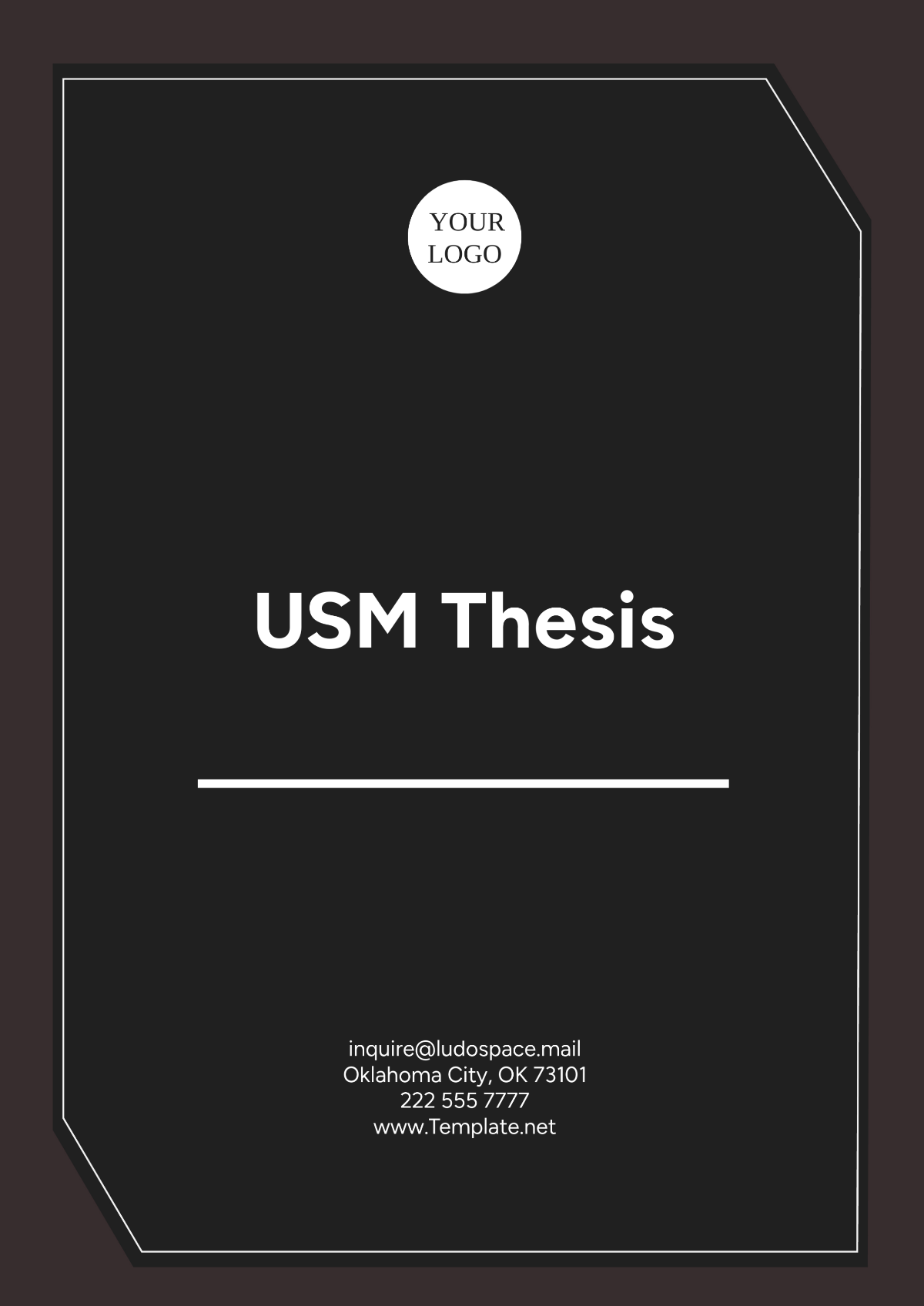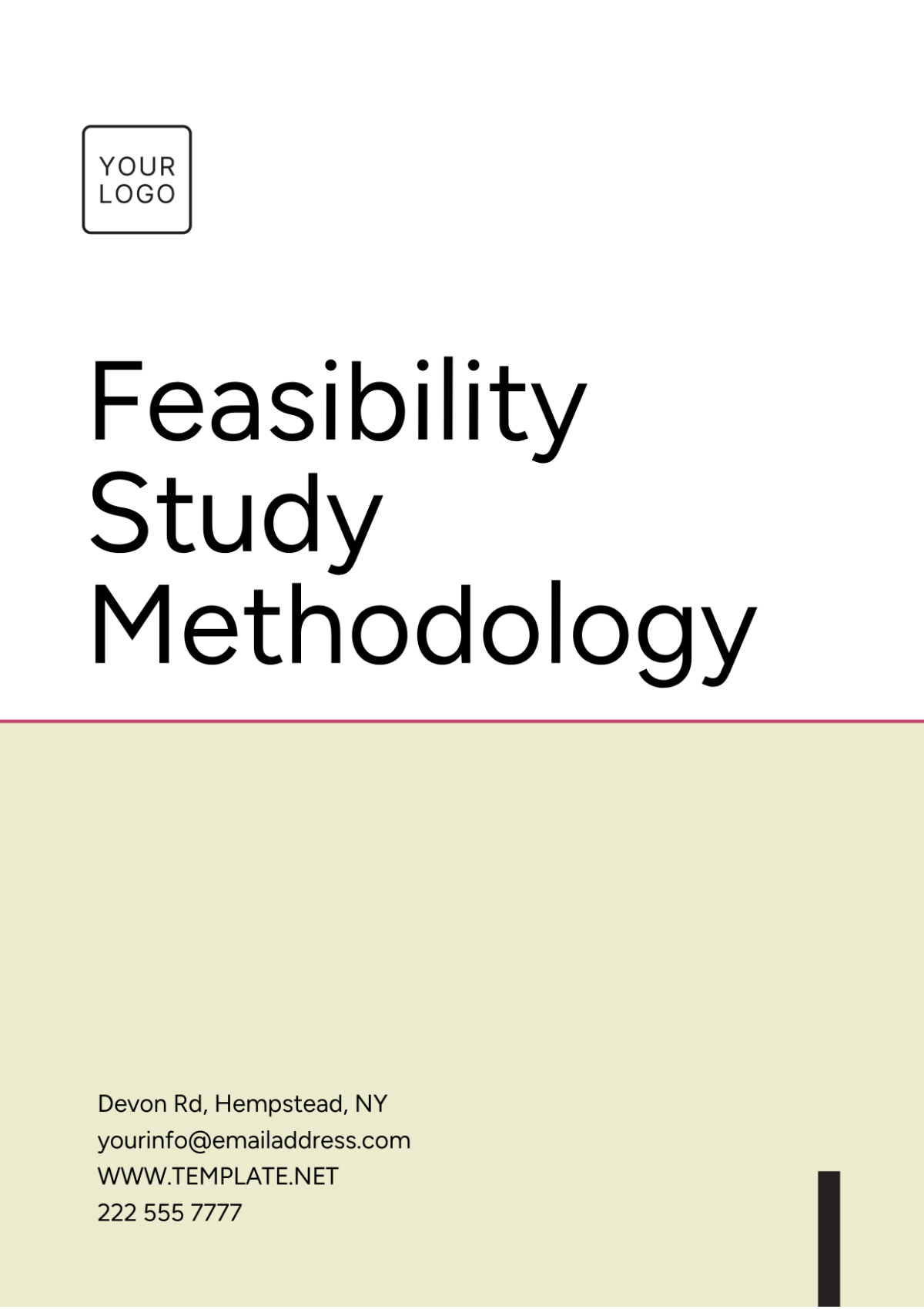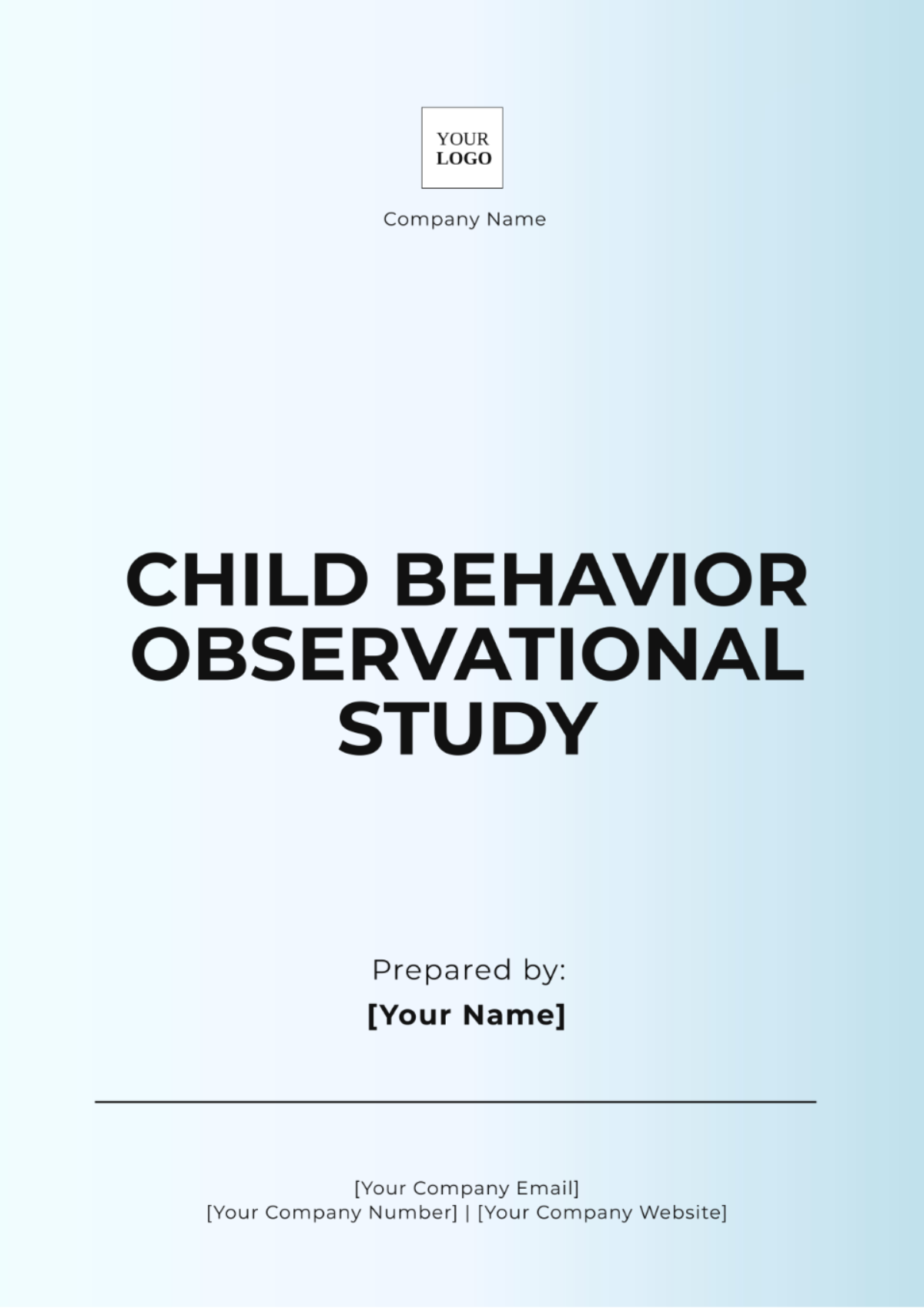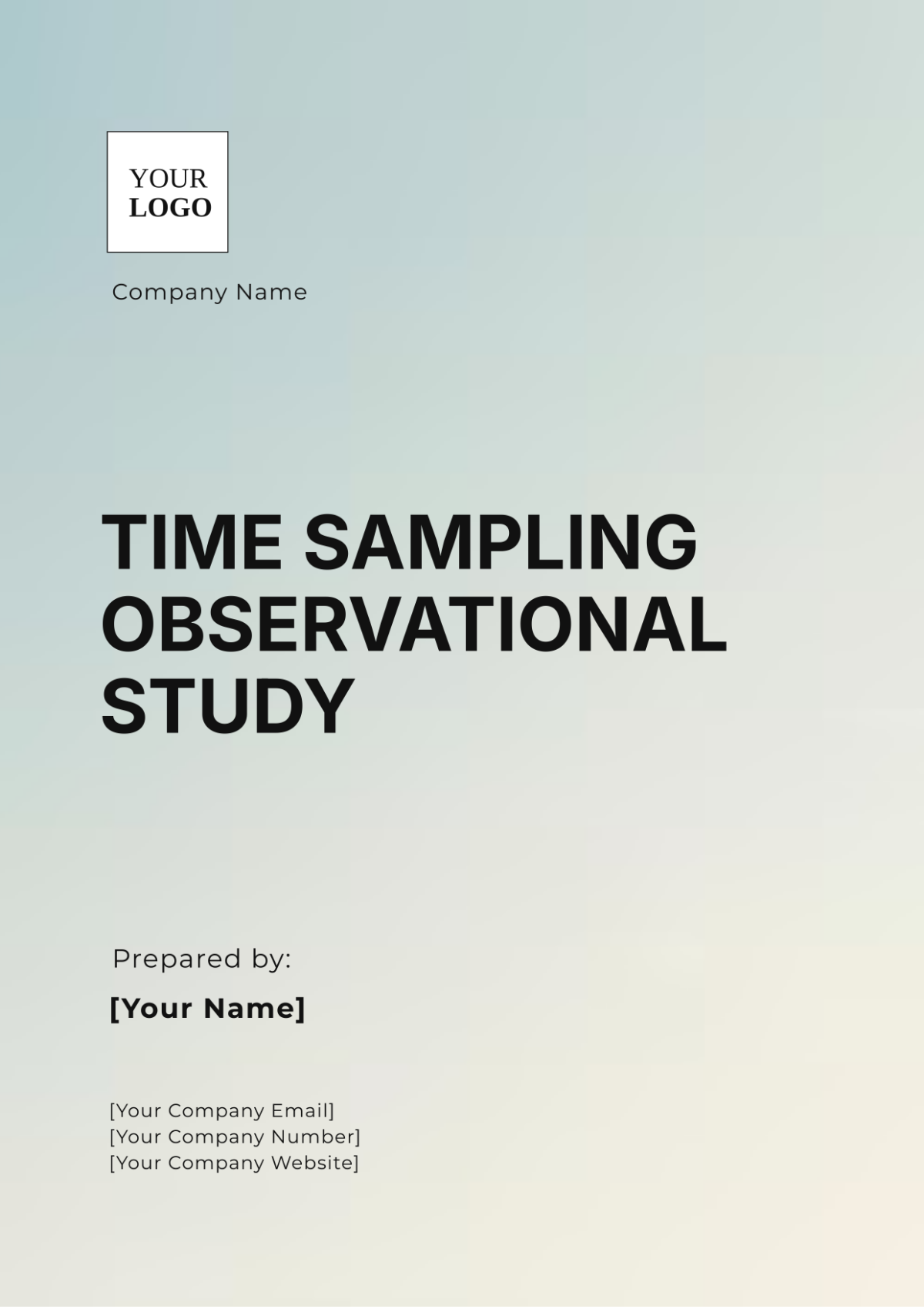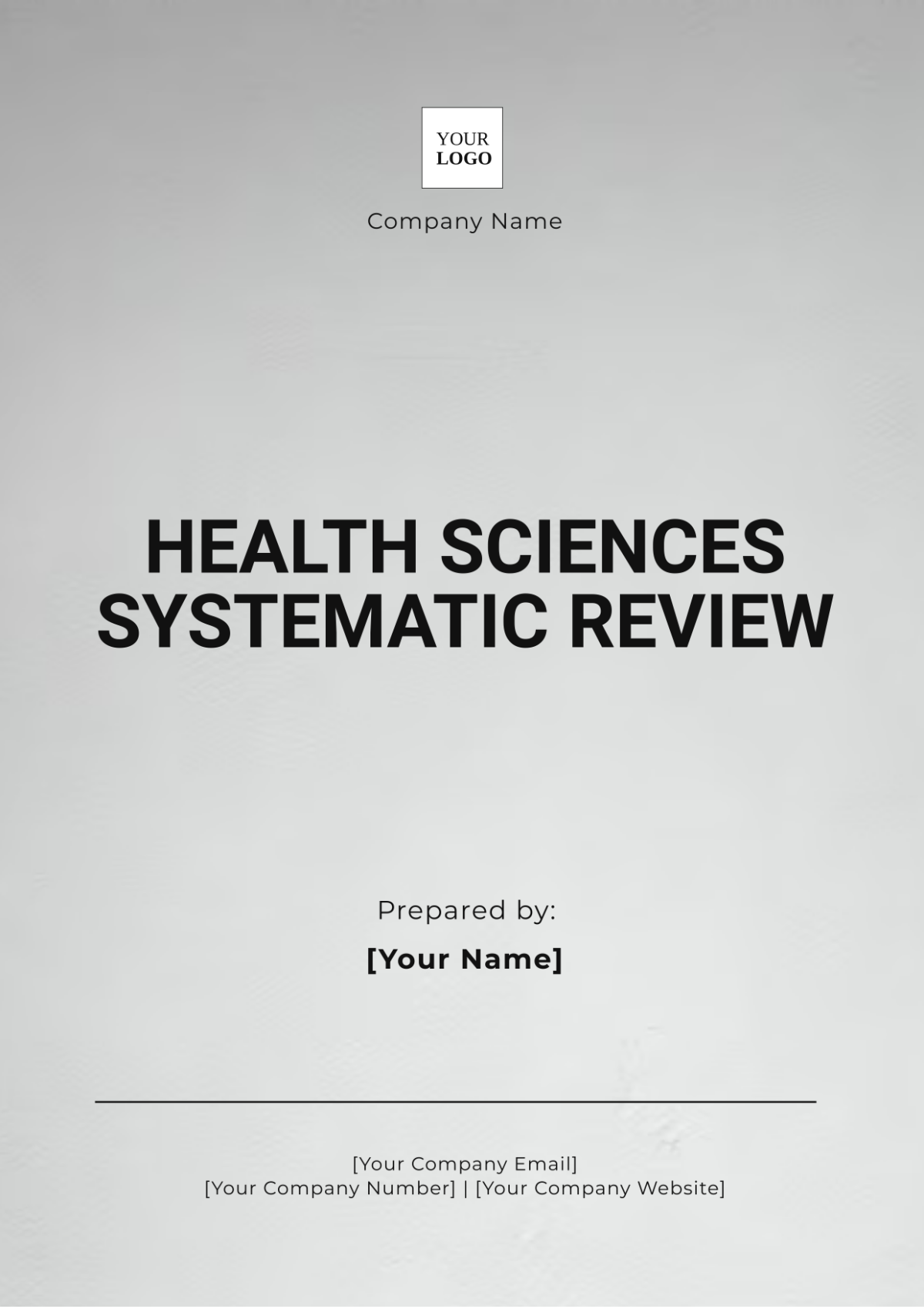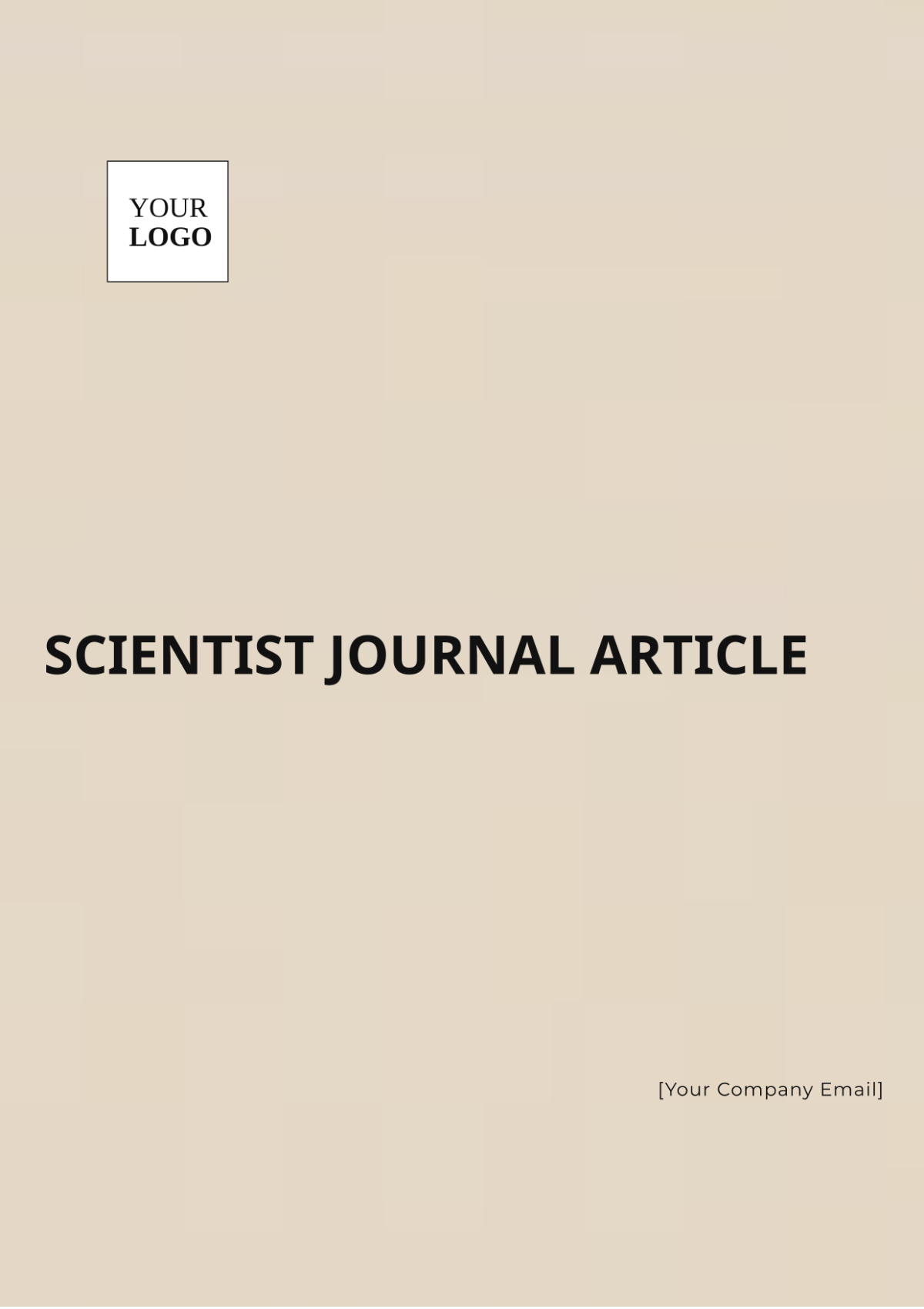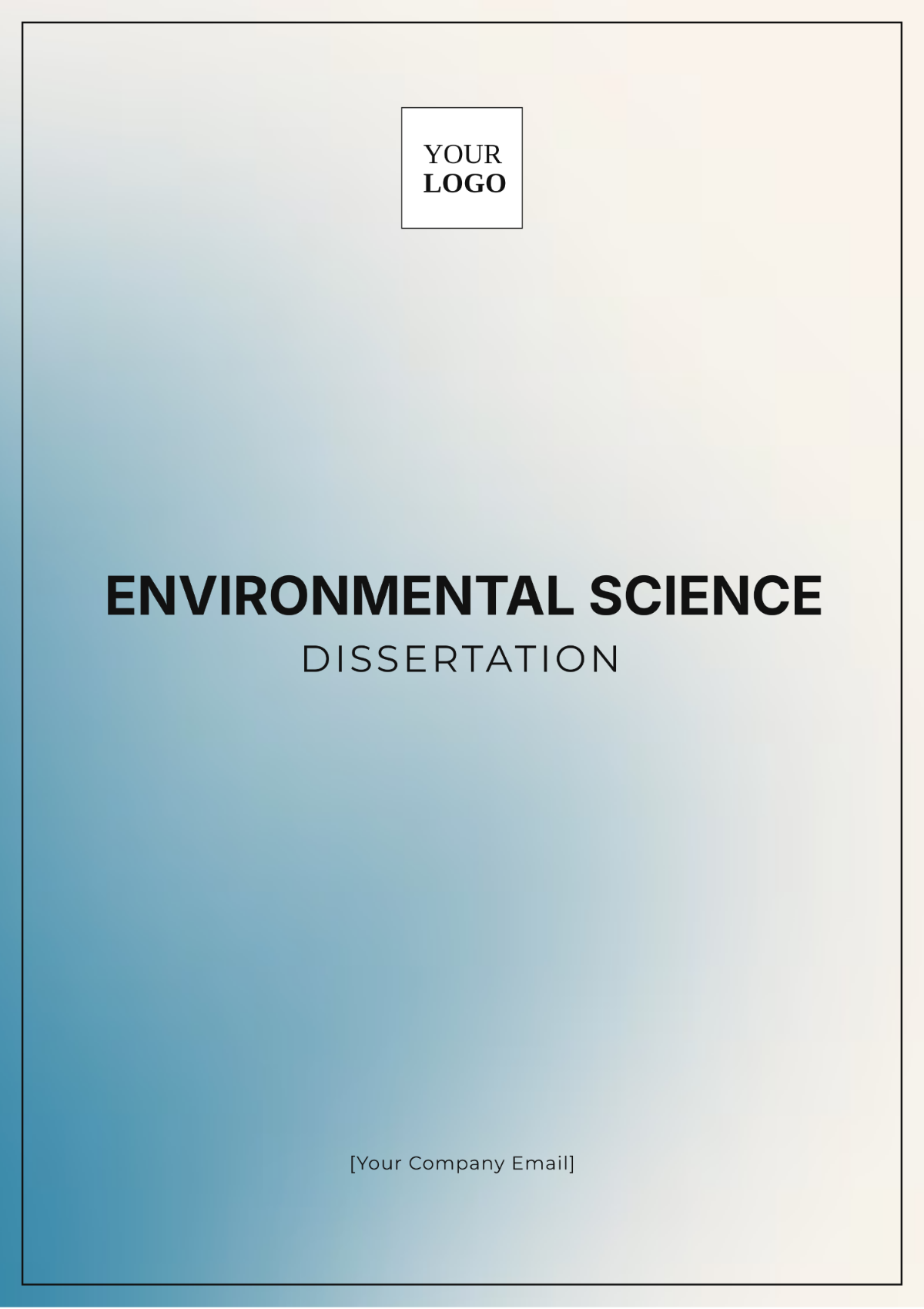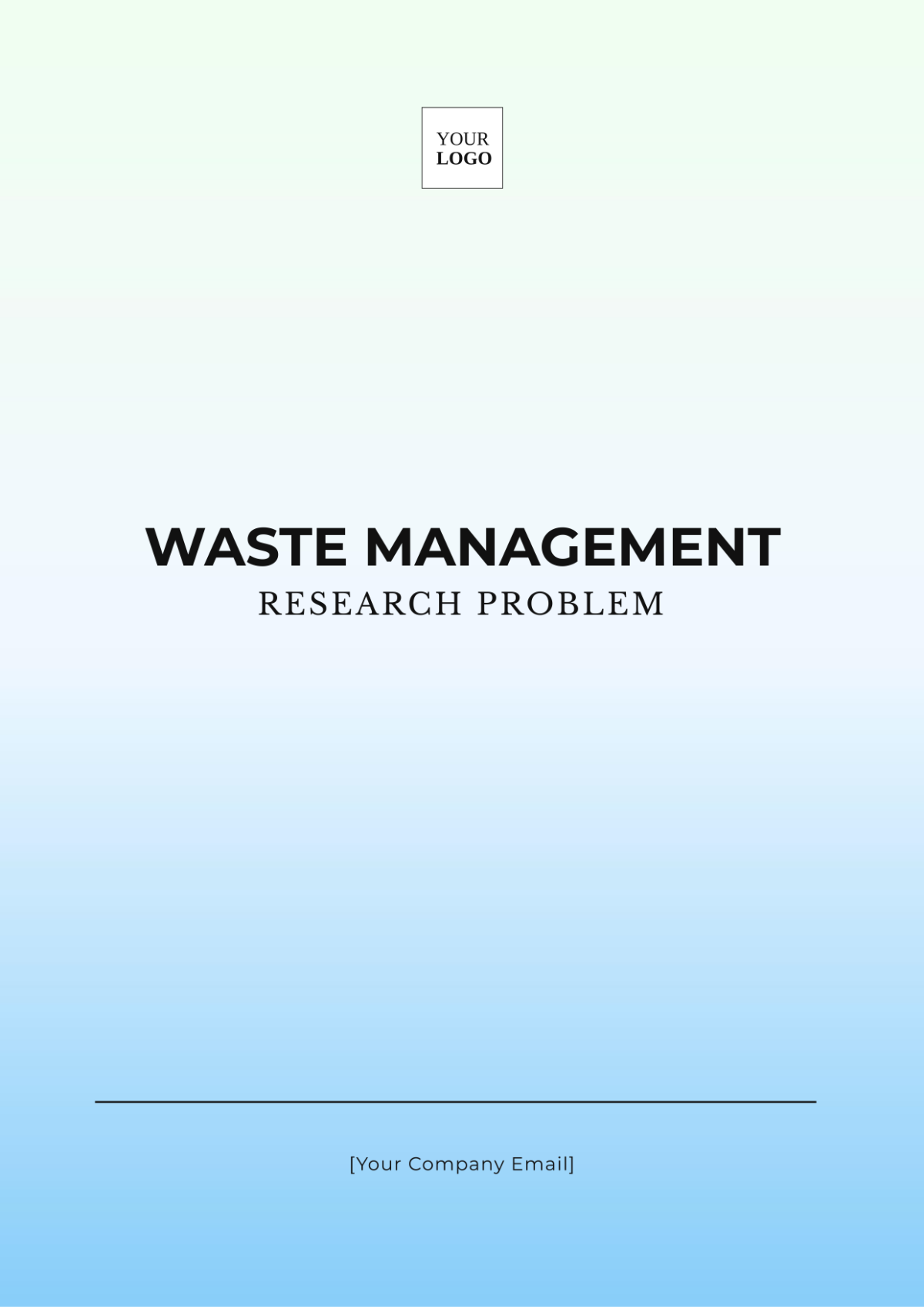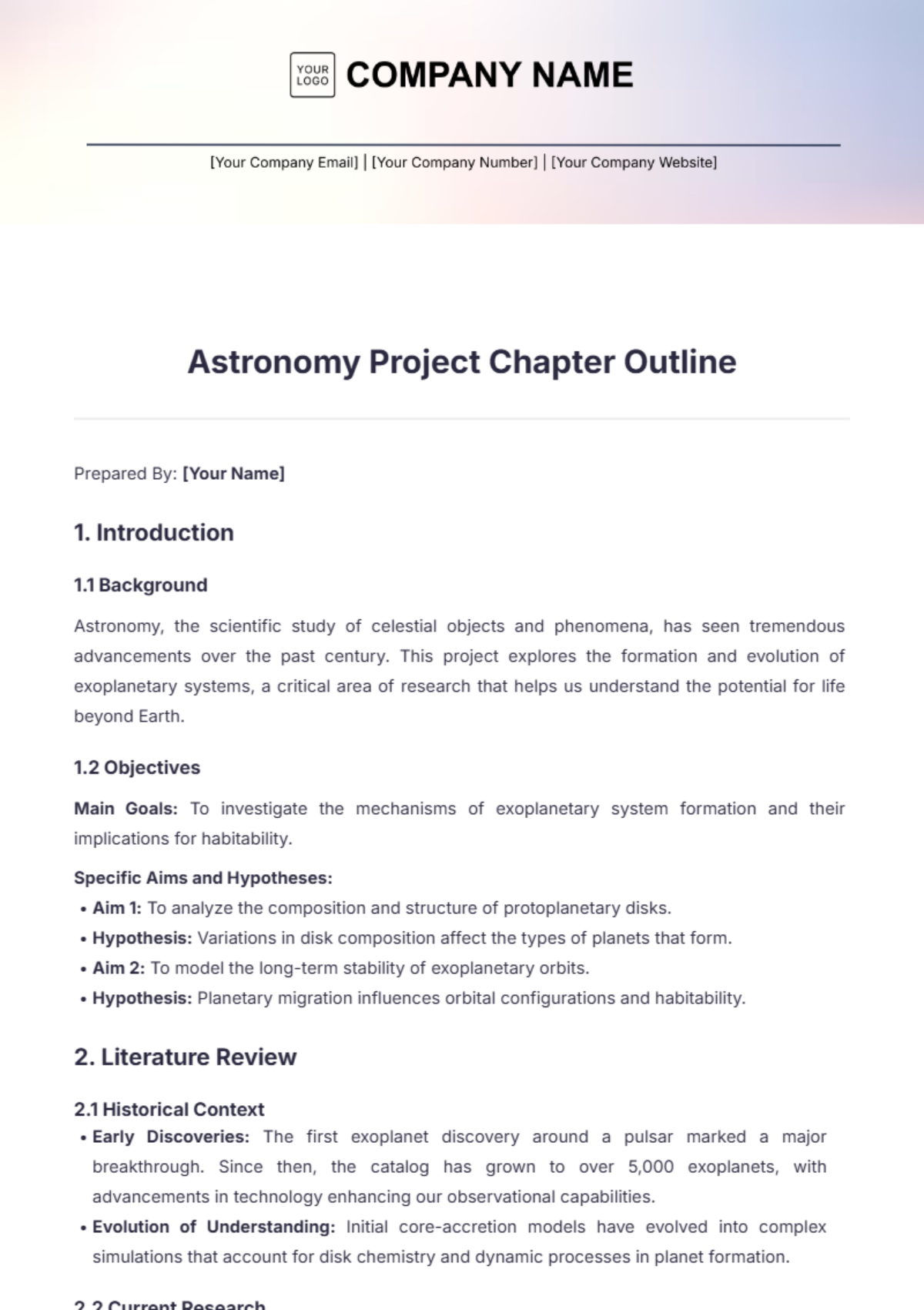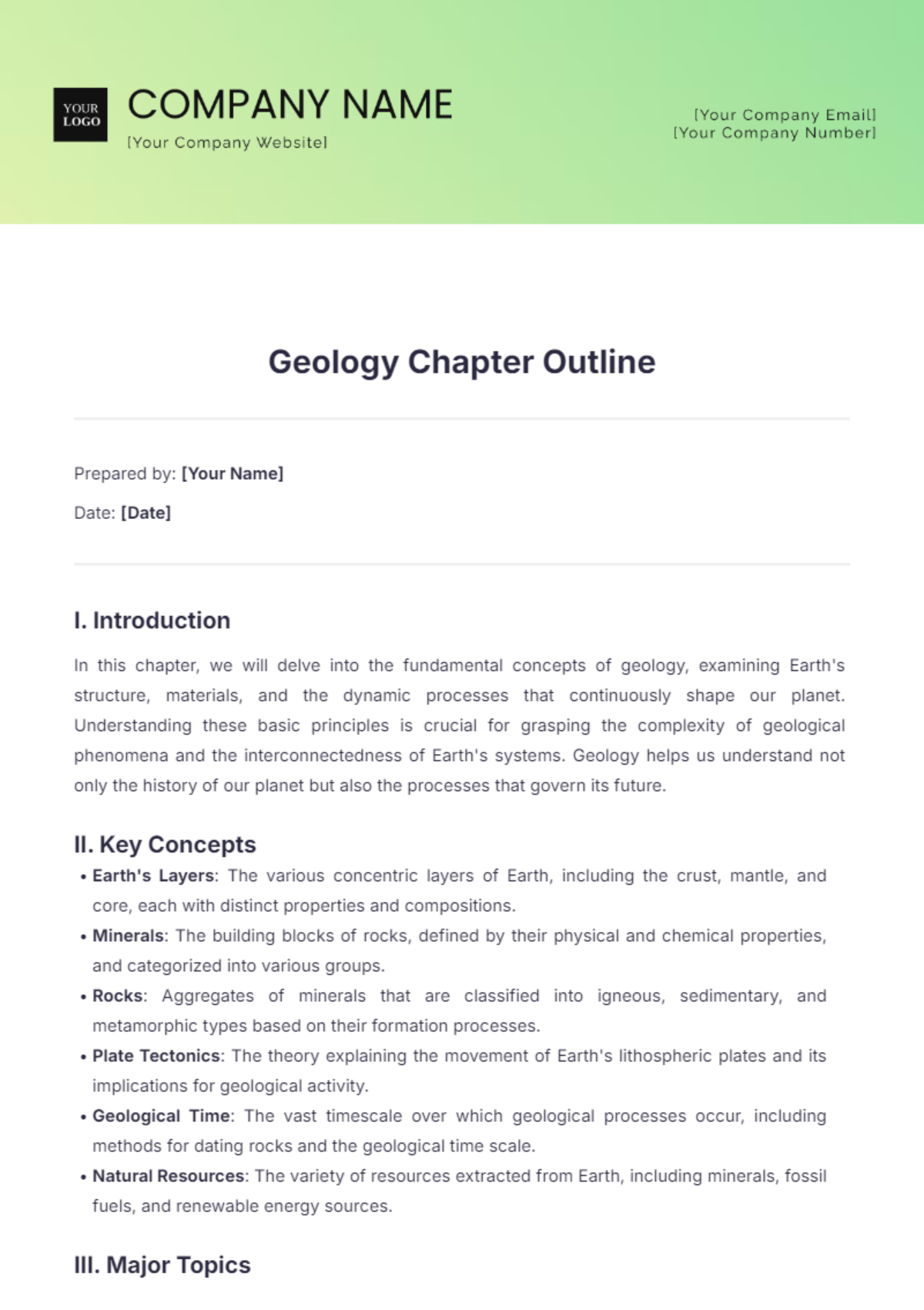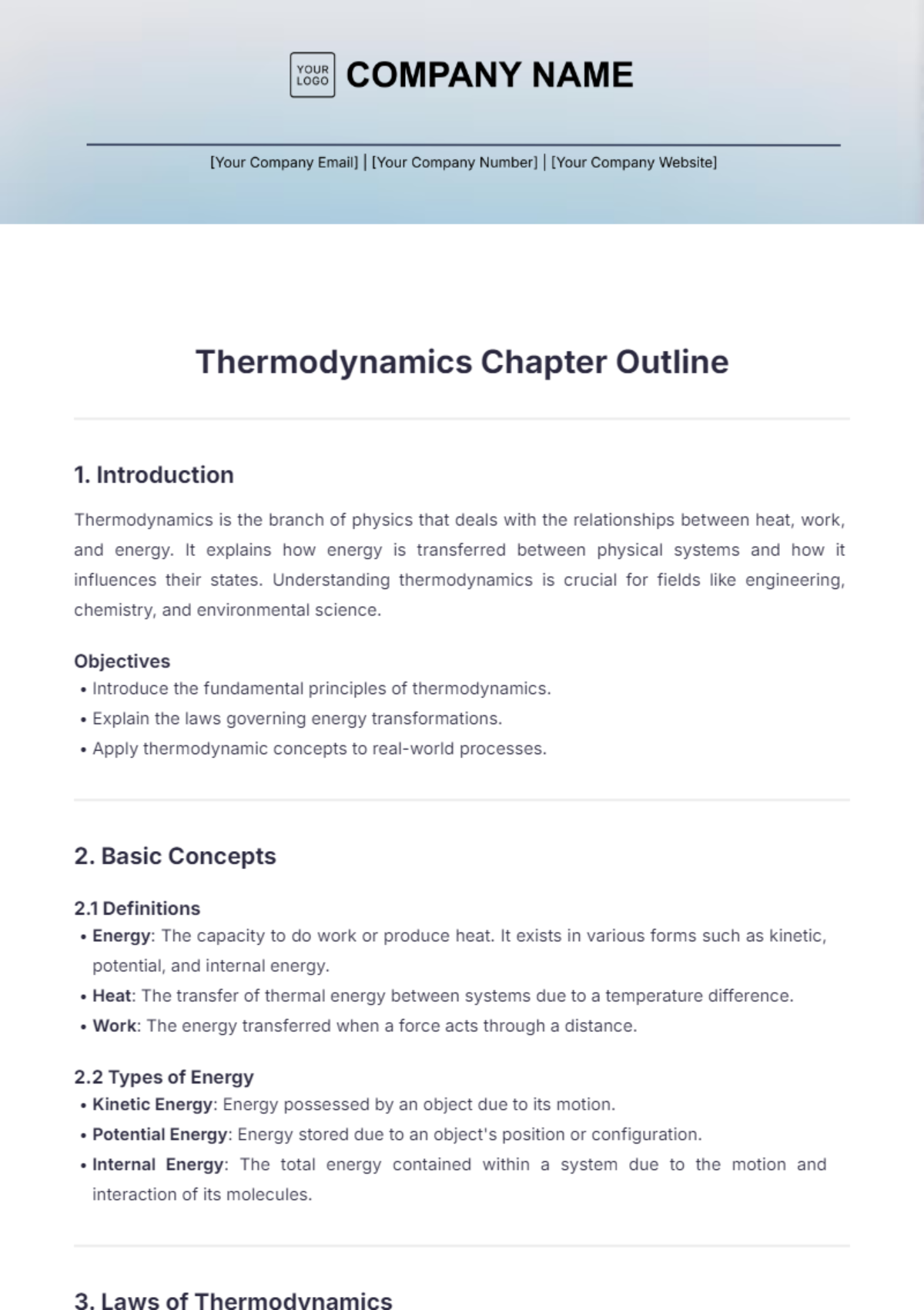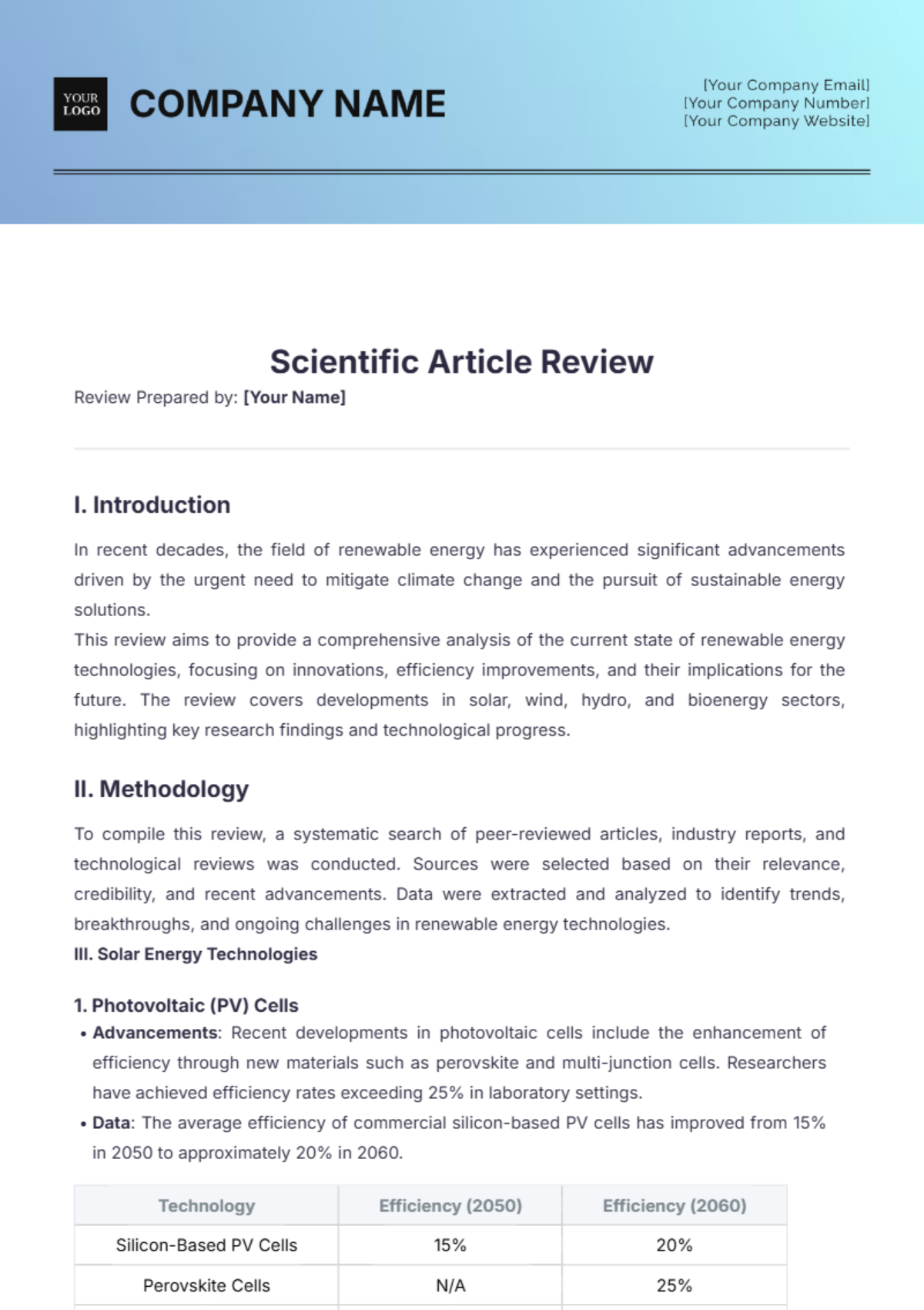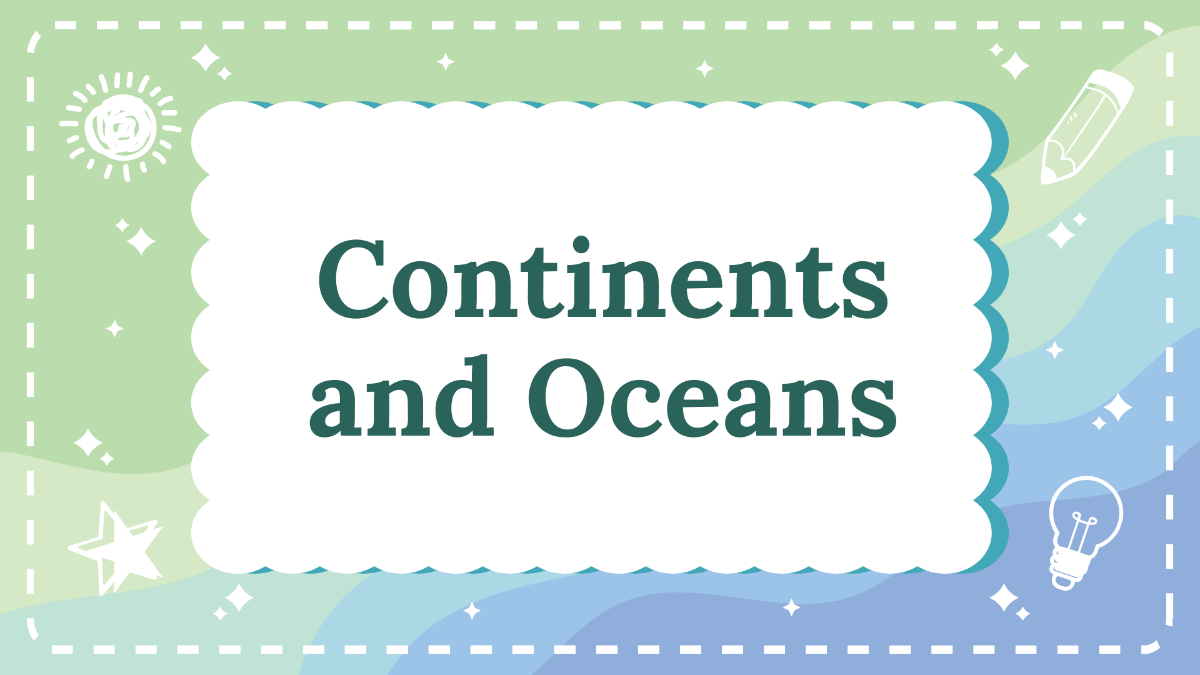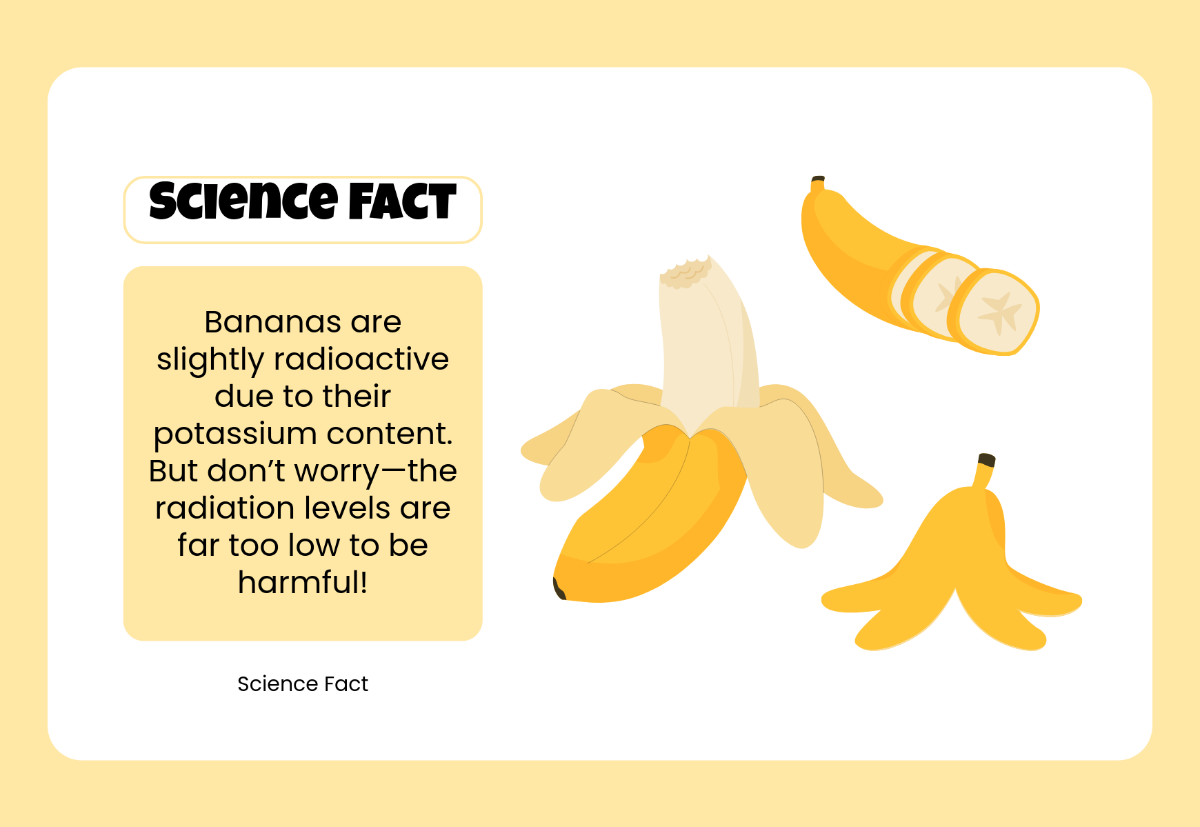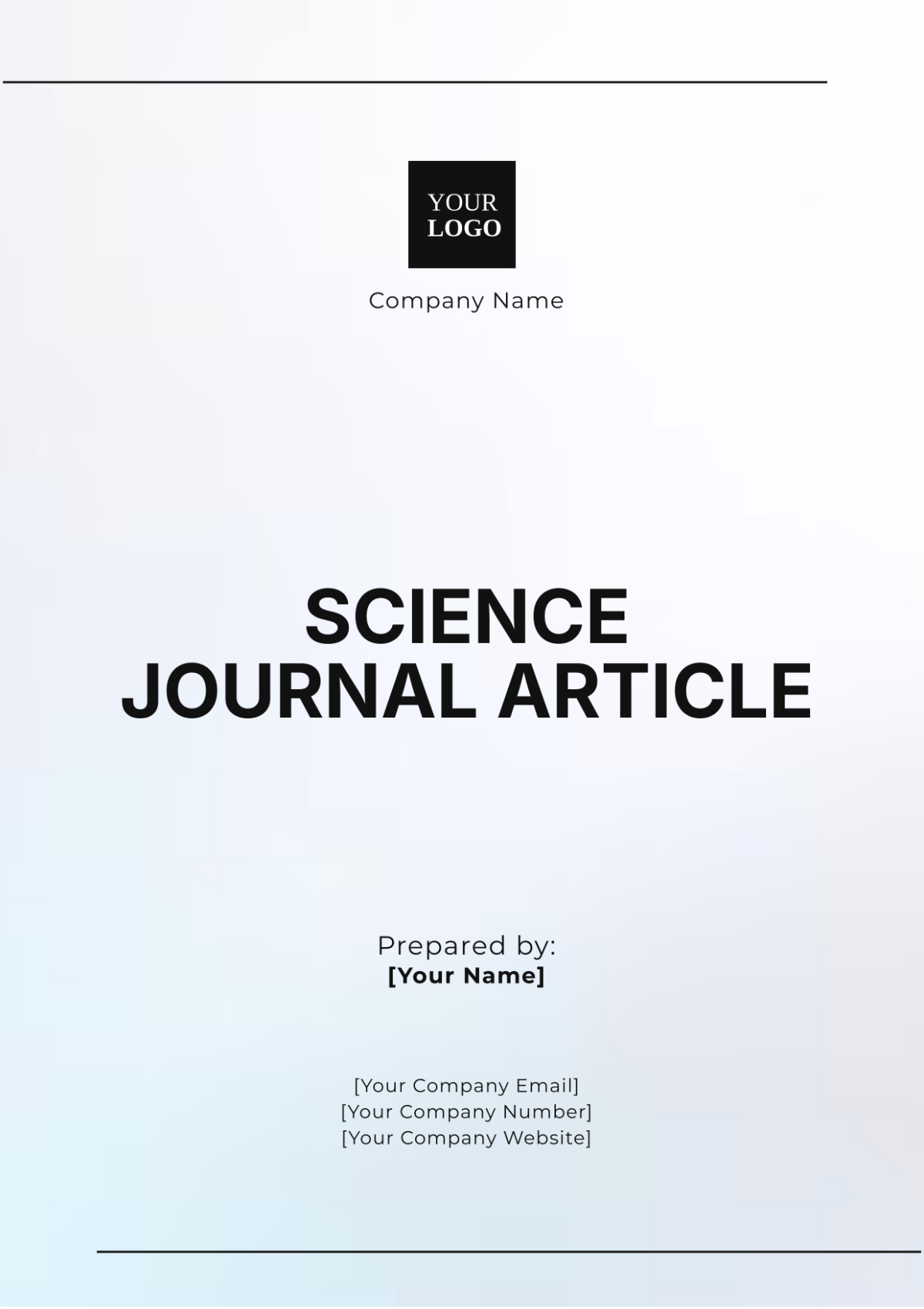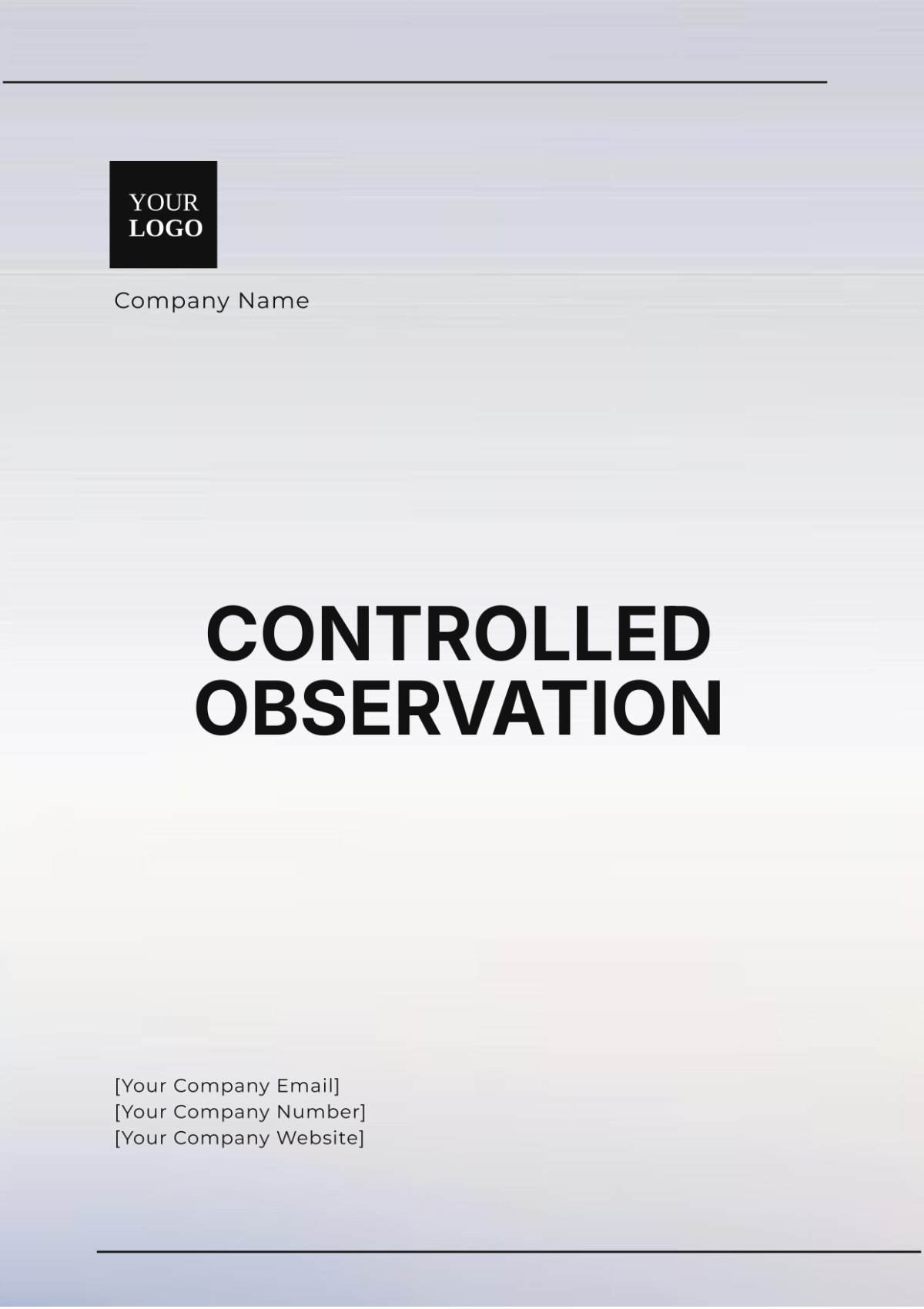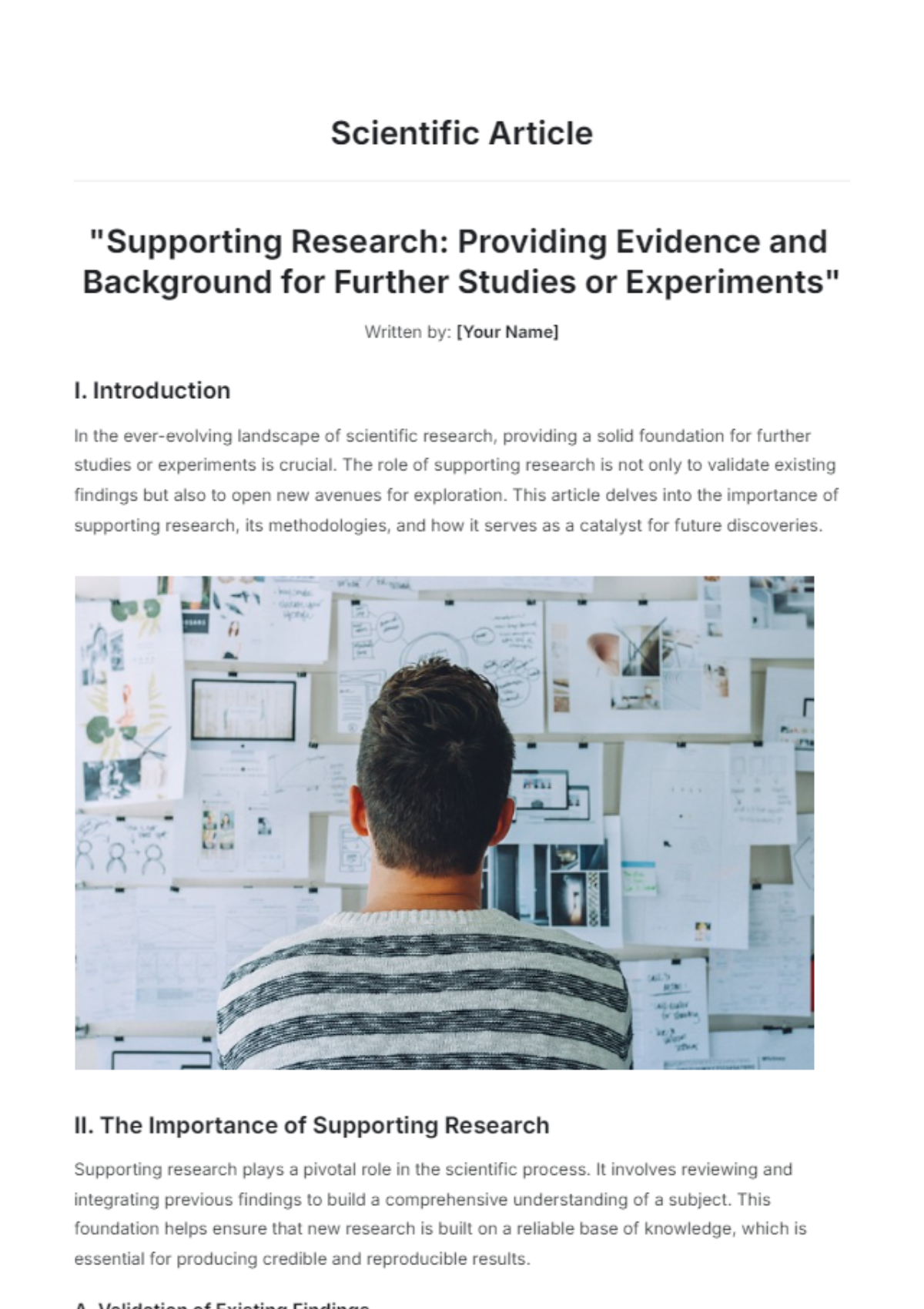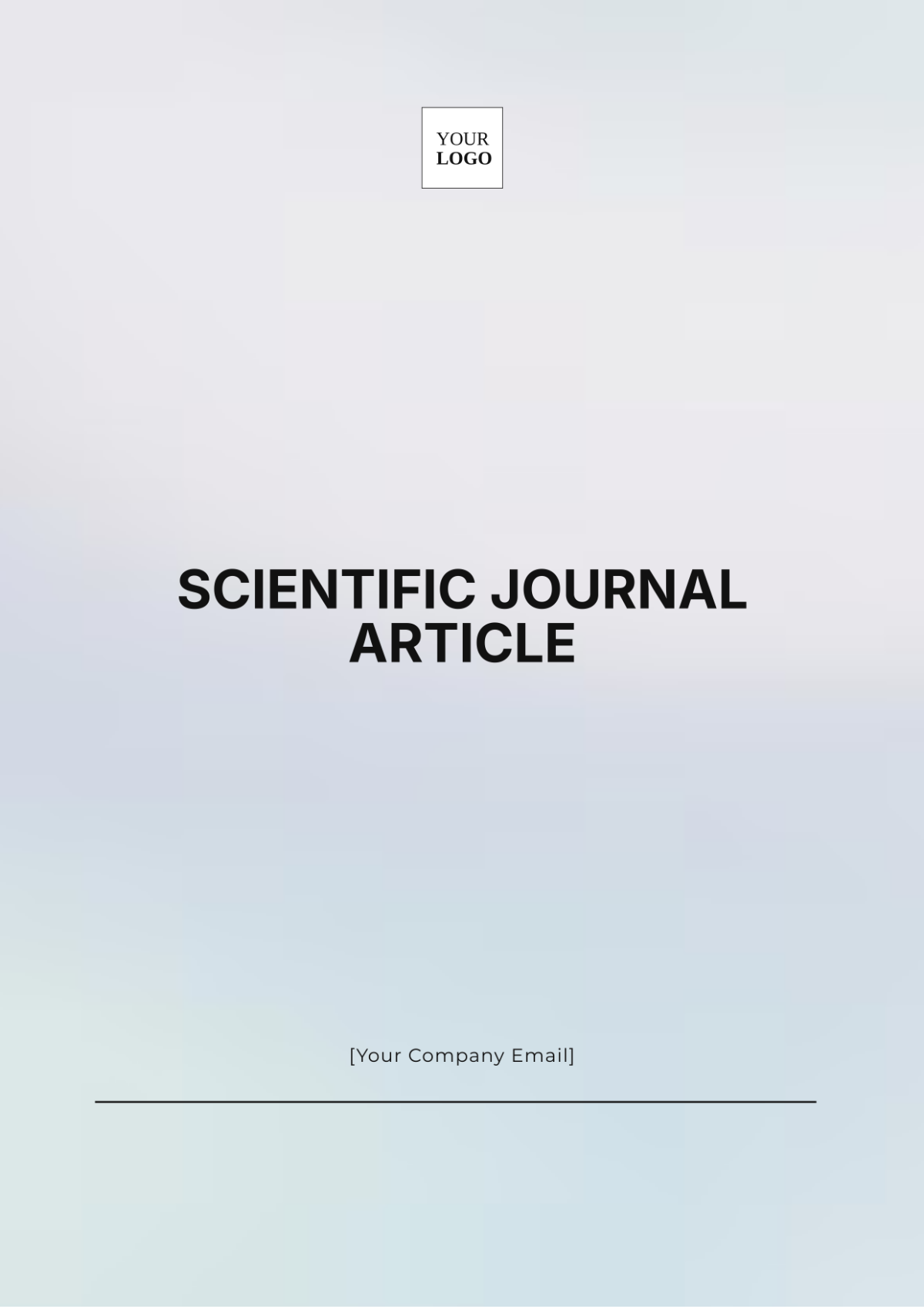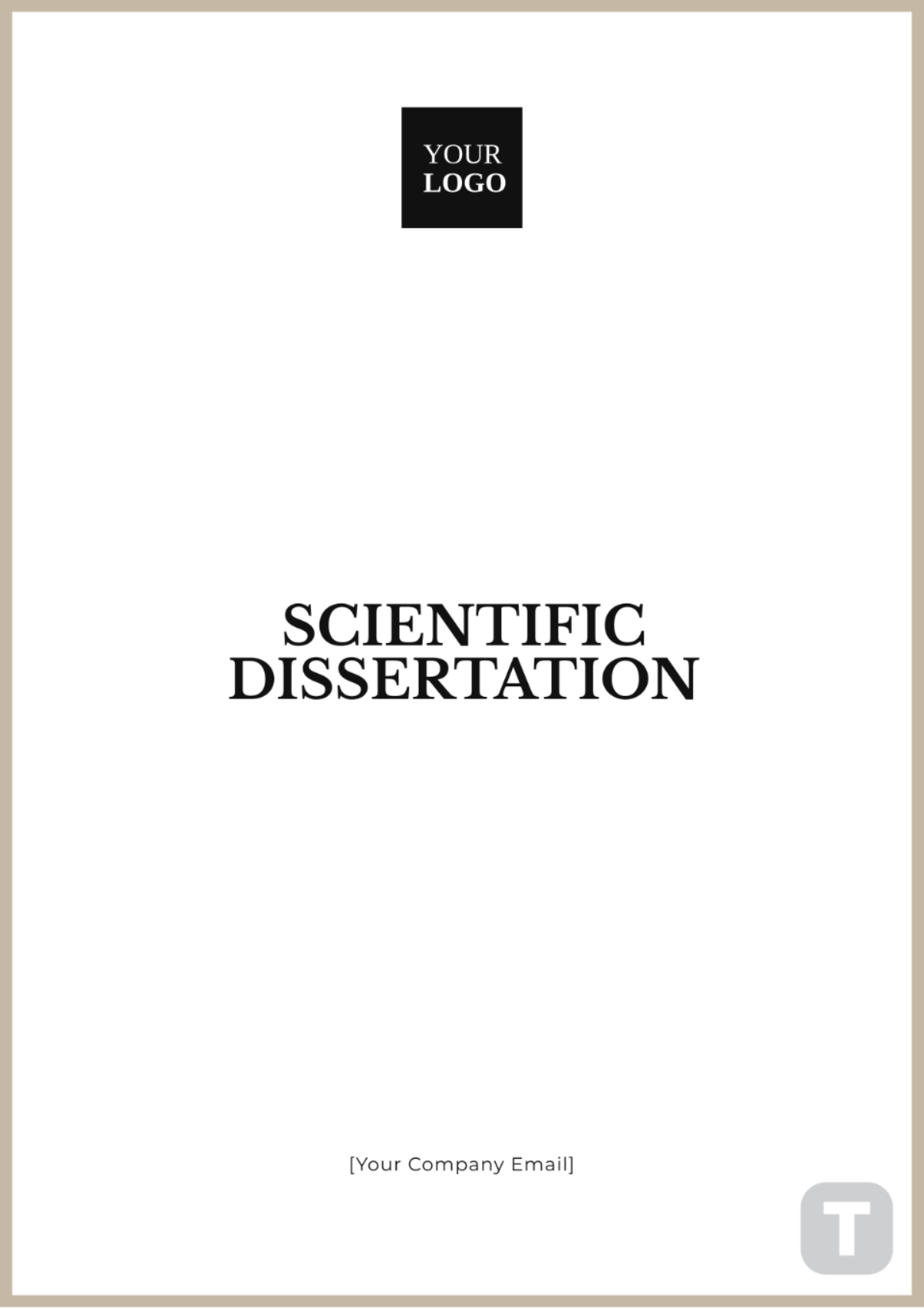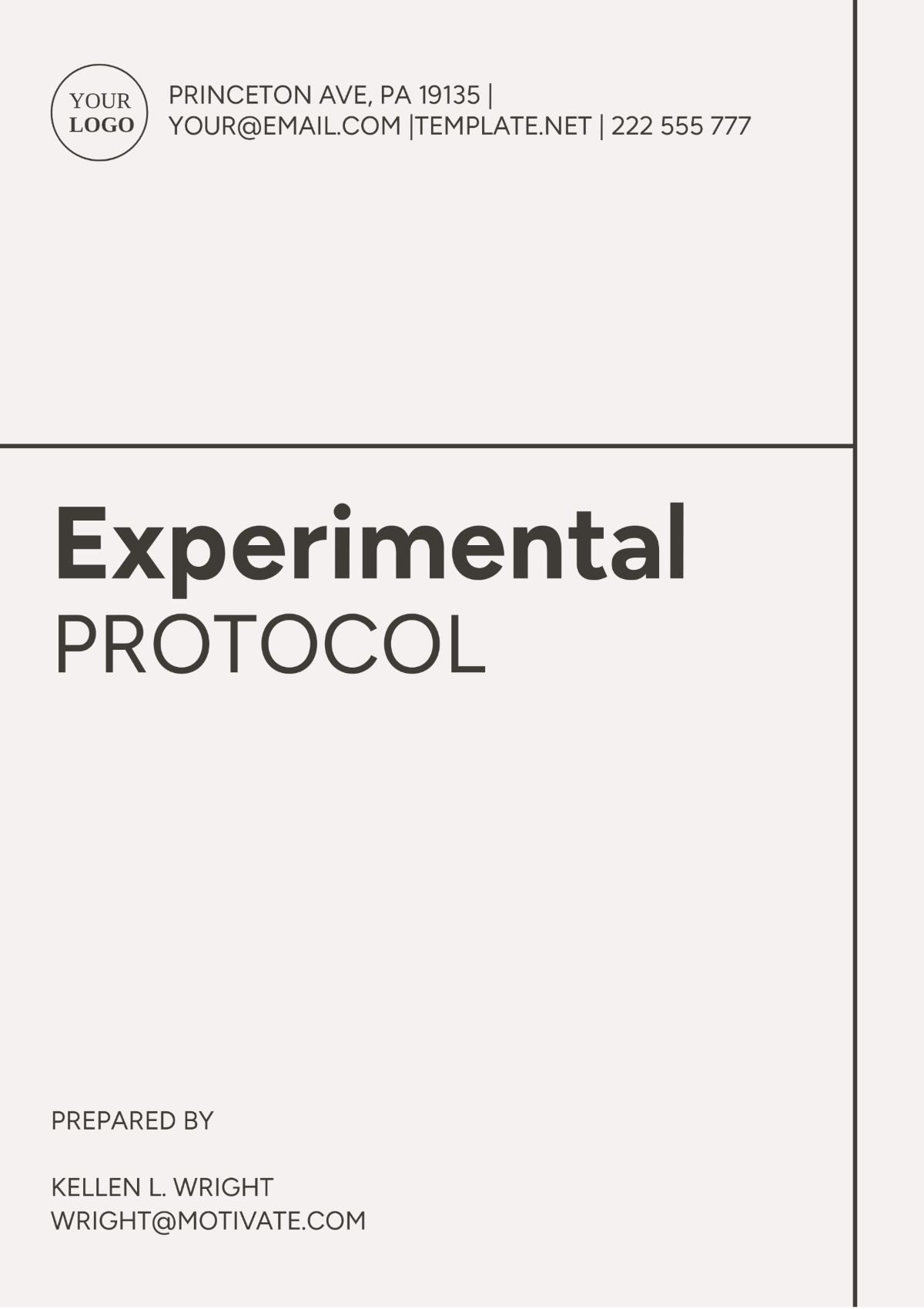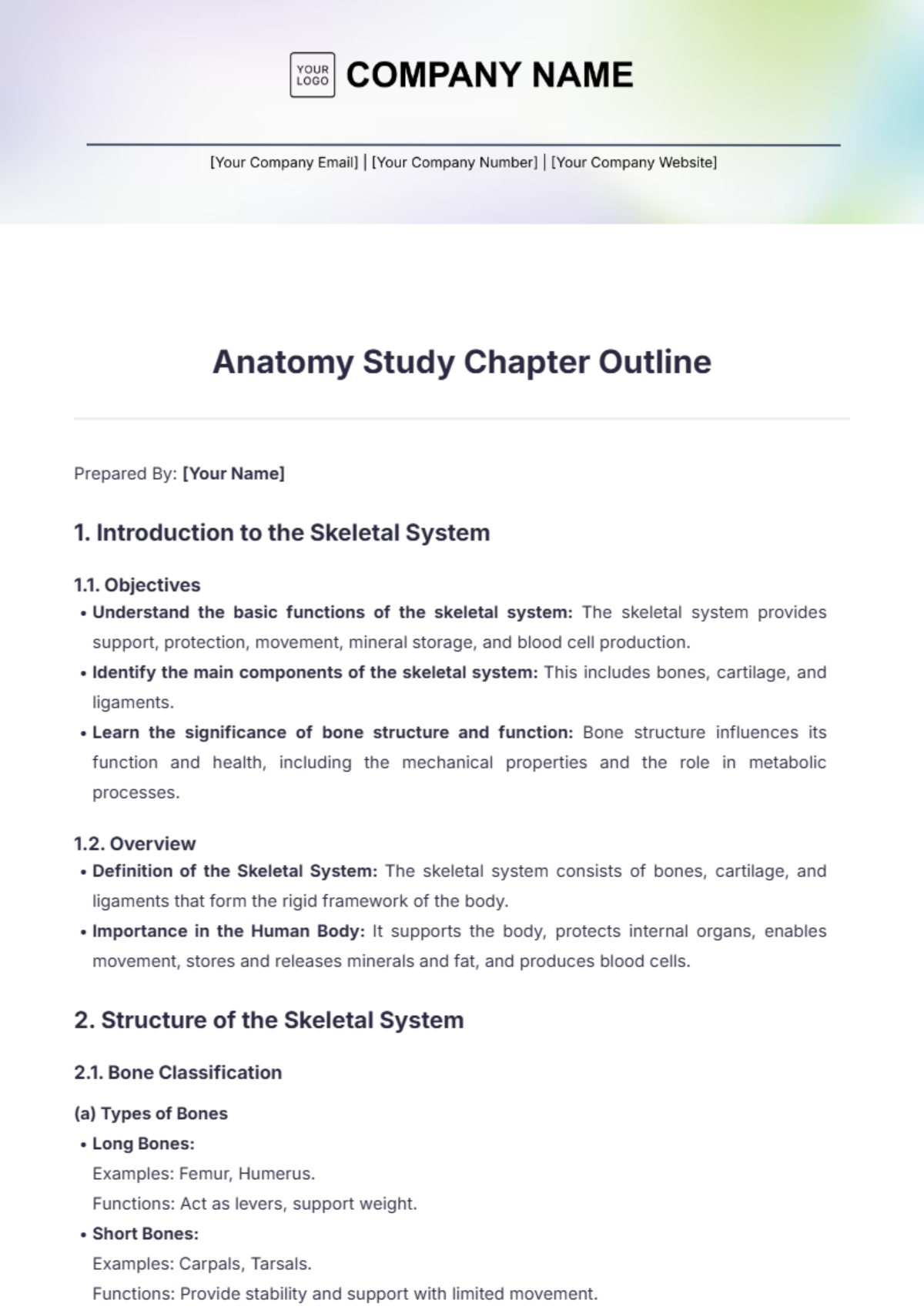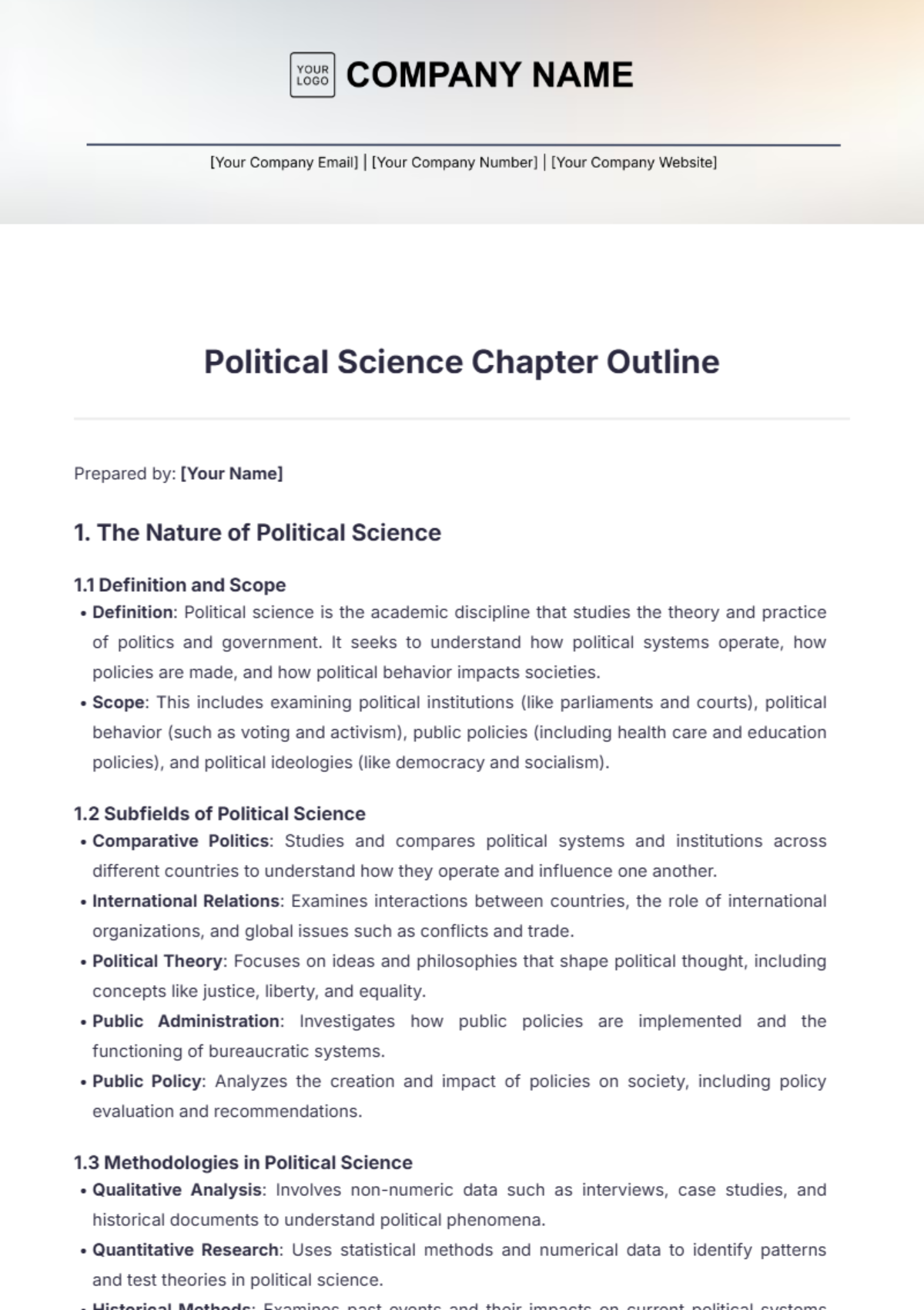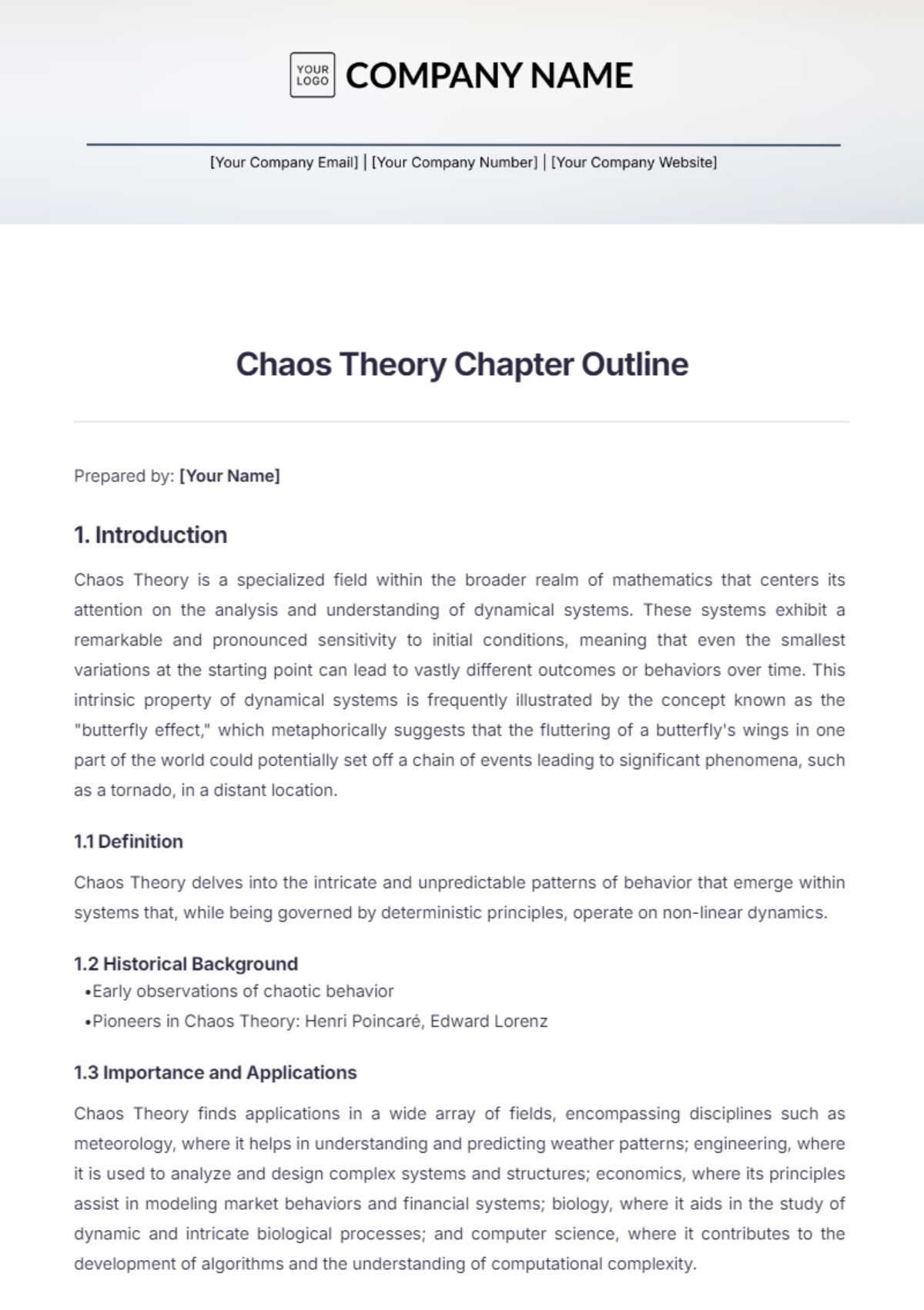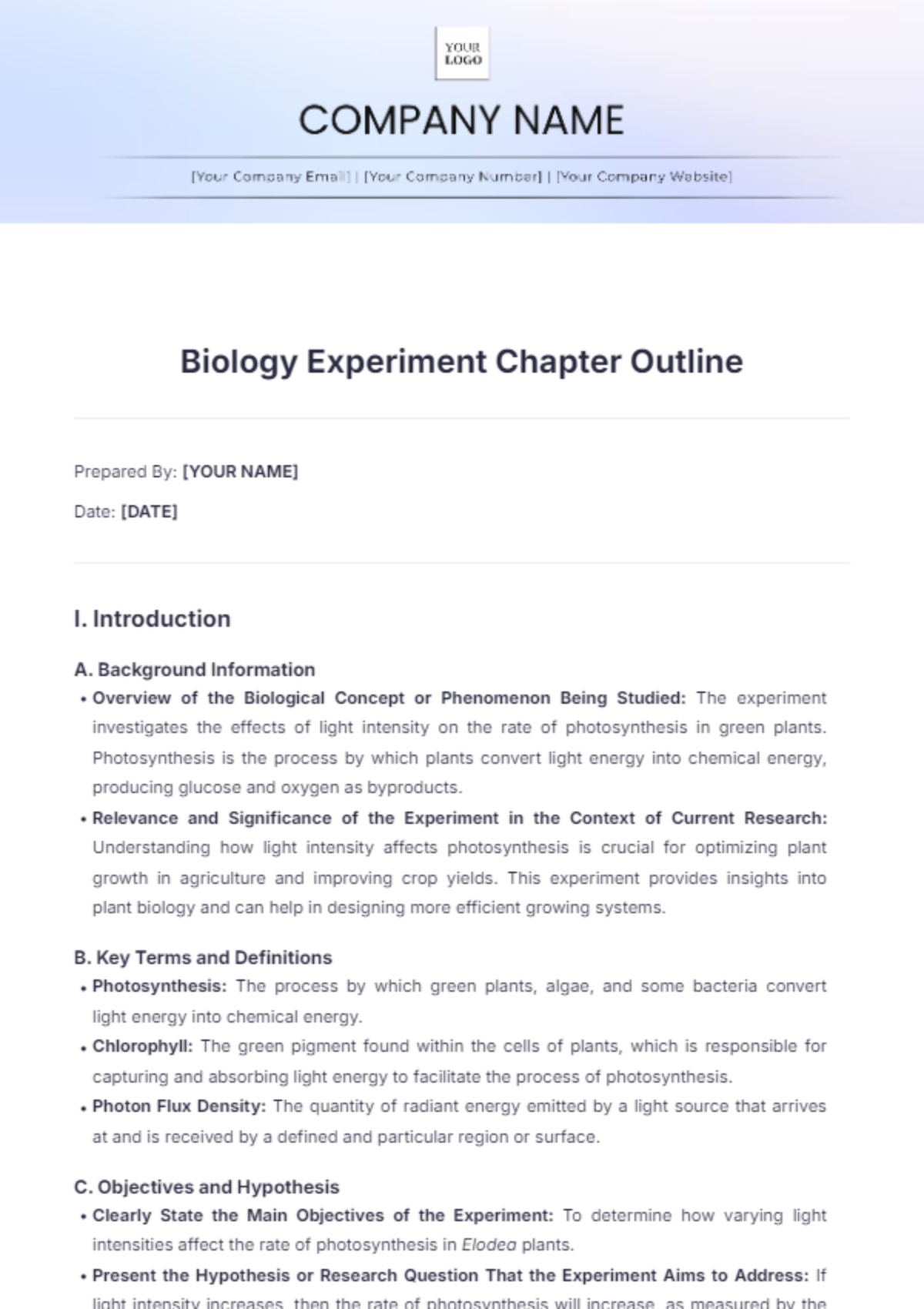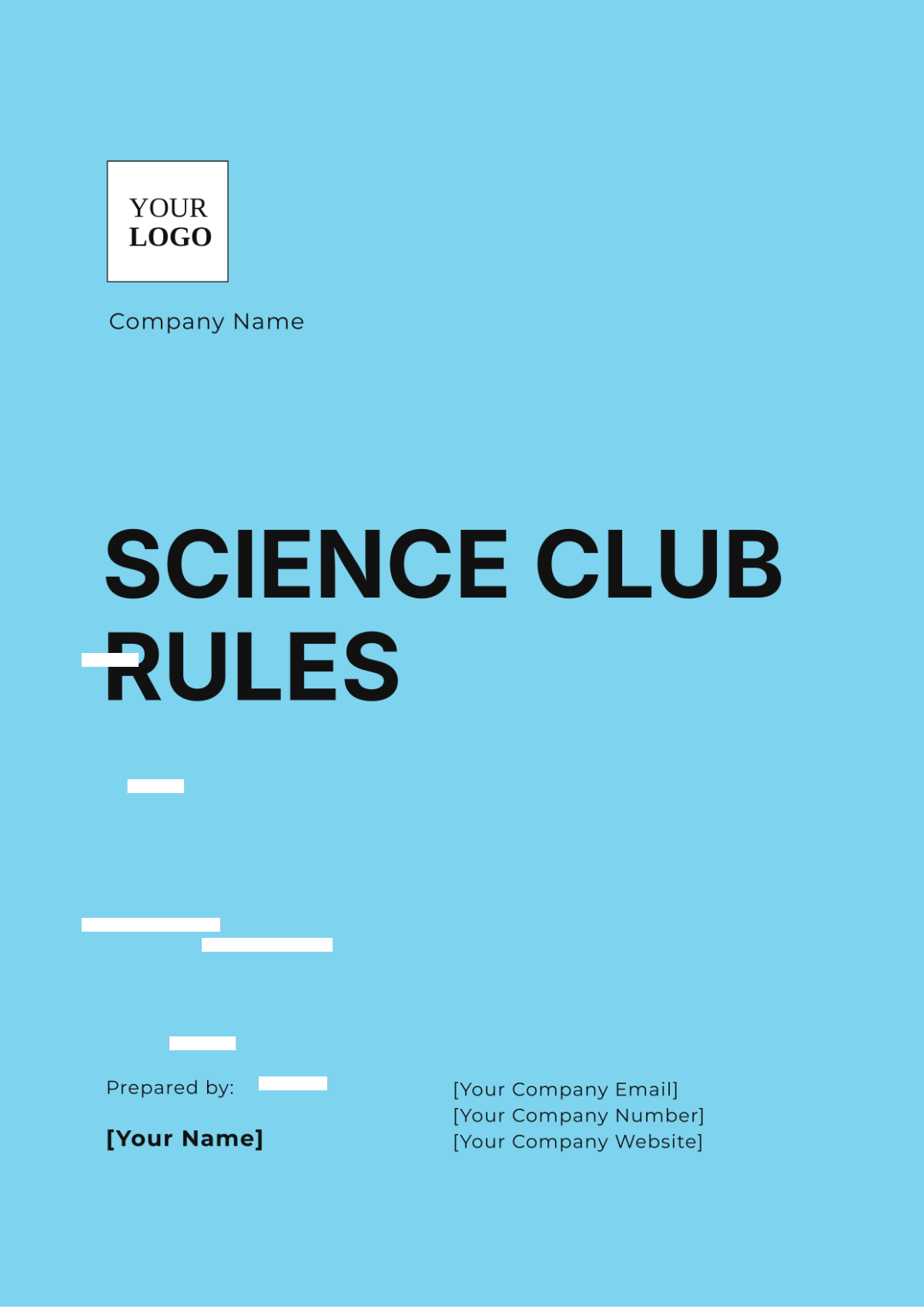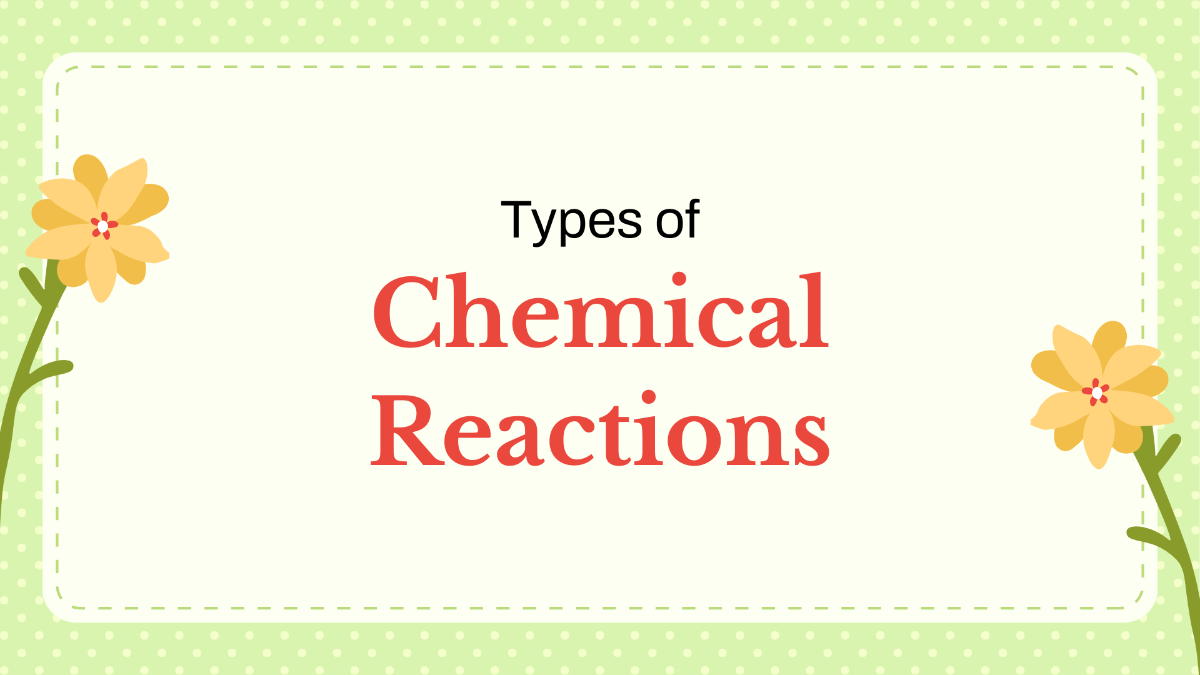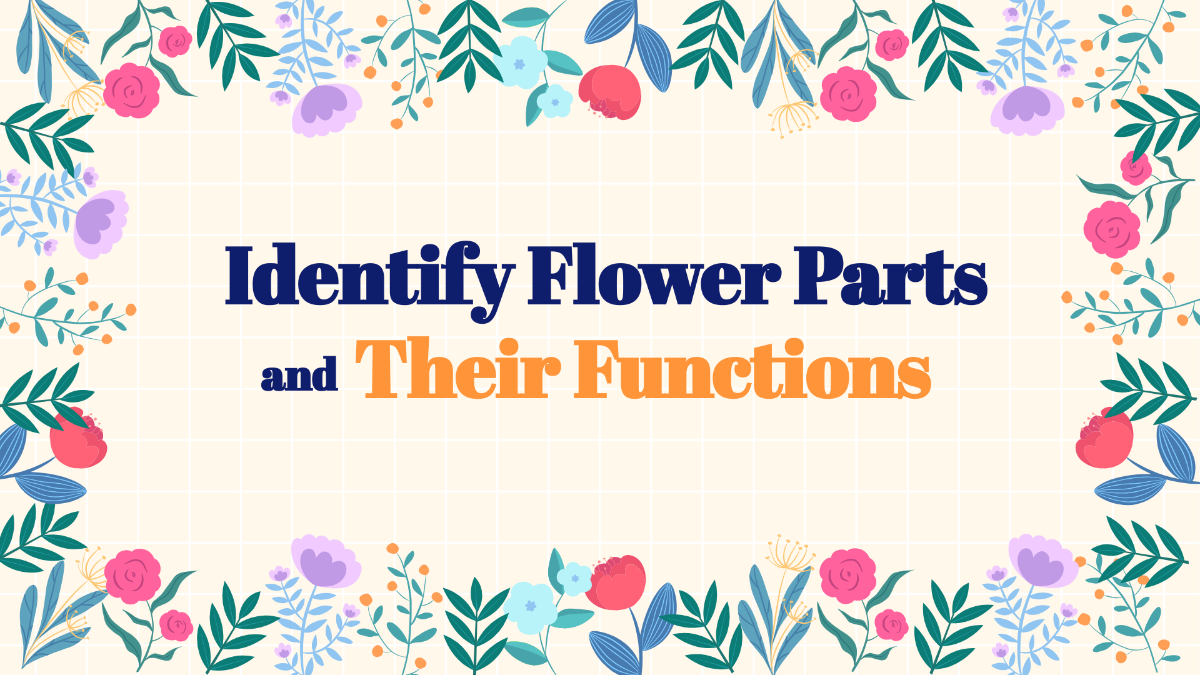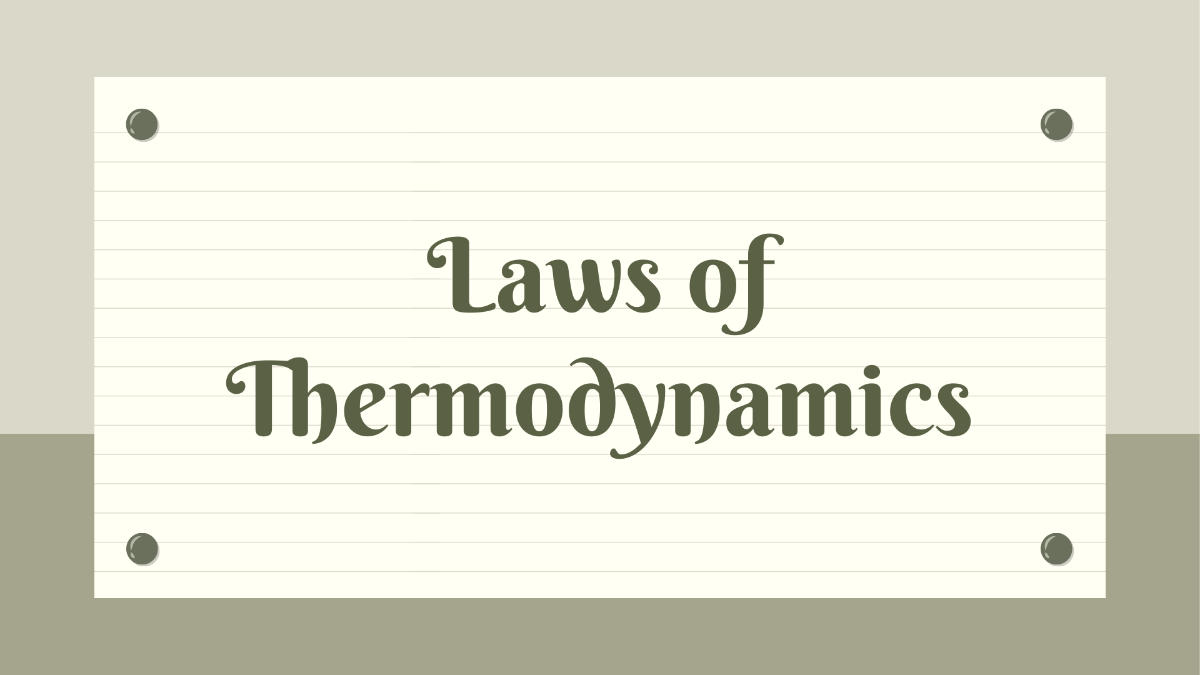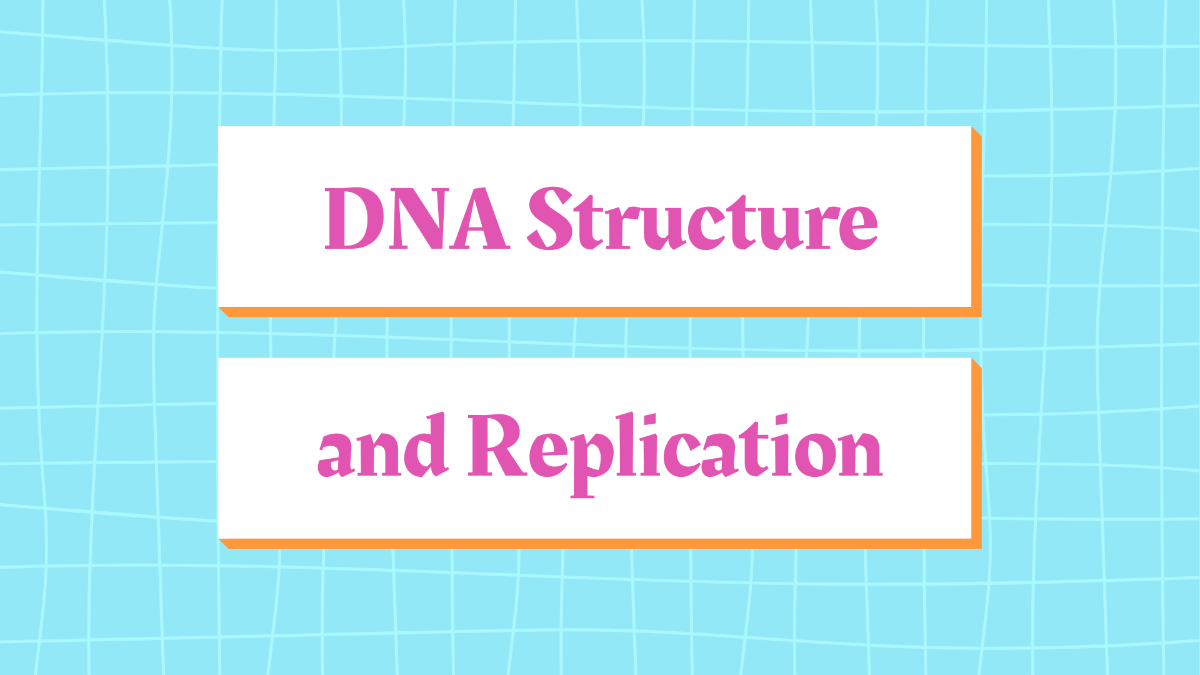Biology Experiment Chapter Outline
Prepared By: [YOUR NAME]
Date: [DATE]
I. Introduction
A. Background Information
Overview of the Biological Concept or Phenomenon Being Studied: The experiment investigates the effects of light intensity on the rate of photosynthesis in green plants. Photosynthesis is the process by which plants convert light energy into chemical energy, producing glucose and oxygen as byproducts.
Relevance and Significance of the Experiment in the Context of Current Research: Understanding how light intensity affects photosynthesis is crucial for optimizing plant growth in agriculture and improving crop yields. This experiment provides insights into plant biology and can help in designing more efficient growing systems.
B. Key Terms and Definitions
Photosynthesis: The process by which green plants, algae, and some bacteria convert light energy into chemical energy.
Chlorophyll: The green pigment found within the cells of plants, which is responsible for capturing and absorbing light energy to facilitate the process of photosynthesis.
Photon Flux Density: The quantity of radiant energy emitted by a light source that arrives at and is received by a defined and particular region or surface.
C. Objectives and Hypothesis
Clearly State the Main Objectives of the Experiment: To determine how varying light intensities affect the rate of photosynthesis in Elodea plants.
Present the Hypothesis or Research Question That the Experiment Aims to Address: If light intensity increases, then the rate of photosynthesis will increase, as measured by the production of oxygen bubbles in Elodea plants.
Discuss the Expected Outcomes and How They Relate to the Hypothesis: Higher light intensities are expected to increase the rate of photosynthesis, shown by more oxygen bubbles, supporting the idea that light intensity boosts photosynthesis.
II. Literature Review
A. Previous Research and Findings
Summary of Relevant Studies and Experiments Related to the Topic: Studies have shown that light intensity directly affects photosynthesis rates, with increased light leading to higher photosynthetic activity. Key research includes experiments by Smith et al. (2050) and Johnson (2051) that demonstrated this relationship in various plant species.
Key Findings from Prior Research and Their Impact on the Current Experiment: Previous research indicates that while light intensity is a significant factor, the response varies among different plant species and light wavelengths. This experiment builds on these findings by focusing specifically on Elodea and varying light intensities.
Identification of Gaps in the Existing Literature That the Current Experiment Seeks to Address: There is limited data on the effects of extremely high light intensities on photosynthesis in aquatic plants. This experiment aims to fill this gap by exploring a wider range of light intensities.
B. Theoretical Framework
Theories or Models That Underpin the Experiment: The light-dependent reactions of photosynthesis, as explained by the light reaction theory, suggest that light energy is converted into chemical energy through the electron transport chain and production of ATP and NADPH.
Explanation of Biological Concepts Relevant to the Study: Photosynthesis involves the absorption of light by chlorophyll, leading to the splitting of water molecules and the generation of energy-rich compounds. Understanding these principles helps in analyzing how variations in light affect the overall process.
III. Materials and Methods
A. Experimental Design
Description of the Experimental Setup and Overall Design: The experiment uses a controlled setup with Elodea plants exposed to different light intensities. A light source with adjustable intensity will be used, and the rate of photosynthesis will be measured by counting oxygen bubbles.
Types of Experiments Conducted: A controlled experiment where the light intensity is systematically varied while other conditions (e.g., water temperature, CO₂ concentration) are kept constant. Comparative analysis between different light intensities will be performed.
B. Materials and Equipment
List of Materials, Chemicals, and Biological Specimens Used: Elodea plants, water, bicarbonate solution, a light source with dimmable settings, beakers, test tubes, and a stopwatch.
Specifications of Equipment and Instruments, Including Any Relevant Settings or Calibration Details: The light source is equipped with a dimmer to adjust light intensity from 0 to 1000 µmol/m²/s. A gas syringe or bubble counter is used to measure the volume of oxygen produced.
C. Detailed Protocols for Data Collection
Bubble Counting Method:
Place Elodea in a beaker filled with water and bicarbonate solution.
Position the beaker under the light source at a fixed distance.
Adjust the light intensity to the desired level.
Start the stopwatch and count the number of oxygen bubbles produced over 10 minutes.
Repeat the procedure for different light intensities.
Detailed Protocols for Data Collection, Including Any Specific Techniques or Methodologies: Use a standard method for bubble counting and record the data in a table. Experiment triplicate to ensure accuracy and reliability of results.
Safety and Ethical Guidelines for the Experiment: Ensure all safety protocols are followed, such as wearing safety goggles and gloves. Dispose of any plant material and chemicals according to safety guidelines. Ensure no harm comes to the plants, and follow ethical guidelines for the use of living organisms.
IV. Results
A. Data Presentation
Tables:
Light Intensity (µmol/m²/s) | Trial 1 (Bubbles) | Trial 2 (Bubbles) | Trial 3 (Bubbles) | Average (Bubbles) |
|---|---|---|---|---|
100 | 50 | 52 | 51 | 51 |
200 | 70 | 68 | 72 | 70 |
300 | 90 | 92 | 91 | 91 |
400 | 110 | 108 | 112 | 110 |
Graphs:
Line Graph:
X-axis: Light Intensity (µmol/m²/s)
Y-axis: Average Number of Bubbles
Plot points for each light intensity and connect them with a line to show the trend.
Bar Chart:
X-axis: Light Intensity (µmol/m²/s)
Y-axis: Average Number of Bubbles
Use bars to represent the average bubble counts for each light intensity.
Description of Any Statistical Analyses Performed
ANOVA (Analysis of Variance):
Purpose: Test for significant differences in photosynthesis rates across different light intensities.
Steps:
Calculate the mean bubble count for each light intensity.
Perform ANOVA to assess differences between means.
Report F-value and p-value.
t-Tests:
Purpose: Compare photosynthesis rates between two specific light intensities.
Steps:
Compare the means of the two light intensities.
Perform a t-test to determine statistical significance.
Report t-value and p-value.
B. Data Interpretation
If the p-value is less than 0.05, it indicates that there are significant differences in the photosynthesis rates between different light intensities. If not, the differences may be due to random variation rather than a true effect.
V. Discussion
A. Interpretation of Results
1. Analysis of How the Results Support or Refute the Hypothesis
Support: If data shows a higher number of oxygen bubbles at increased light intensities, it supports the hypothesis.
Refute: If the data indicates no significant change or a decrease in bubble count with higher light intensity, the hypothesis is refuted.
Discussion of the Biological Implications of the Findings
Photosynthesis Understanding: The results help clarify the relationship between light intensity and photosynthesis efficiency.
Agricultural Applications: Findings can inform agricultural practices, such as optimizing greenhouse light conditions to maximize plant growth and yield.
B. Comparison with Hypothesis and Previous Studies
Comparison of the Experiment’s Outcomes with the Expected Results and Findings from Previous Research
Consistency: If results show increased photosynthesis with higher light intensities, they are consistent with previous studies supporting this relationship.
Discrepancies: If results show deviations, such as reduced photosynthesis at very high light intensities, these discrepancies need to be addressed.
Discussion of Any Discrepancies or Unexpected Results
Unexpected Results: The bubble counts observed at higher light intensities were found to be lower than what was initially expected.
Possible Explanations: Propose factors such as light saturation point, photo inhibition, or experimental errors affecting the results.
C. Limitations and Potential Errors
Identification of Any Limitations in the Experimental Design or Execution
Light Intensity Variations: Variations that arise as a result of the inconsistent performance of the light source.
Bubble Counting: There is a possibility of human error occurring when individuals attempt to accurately count the number of bubbles.
Discussion of Potential Sources of Error and Their Impact on the Results
Temperature Fluctuations: Temperature changes may affect the rate of photosynthesis, leading to inconsistent results.
Light Intensity Measurement: Inaccuracies in measuring and maintaining consistent light intensity may have skewed results.
Impact: These errors could lead to unreliable data, affecting the validity of the conclusions.
VI. Conclusion
A. Summary of Findings
Recap of the Main Results and Their Significance: The experiment demonstrated a positive correlation between light intensity and the rate of photosynthesis. Specifically, higher light intensities resulted in an increased number of oxygen bubbles produced, thereby supporting the hypothesis that light intensity positively affects photosynthesis.
Summary of How the Experiment Contributes to the Understanding of the Biological Concept: The findings enhance the understanding of the role of light in photosynthesis by quantifying the relationship between light intensity and the rate of oxygen production. This contributes to the broader biological concept by providing empirical data that reinforces theoretical models of photosynthesis.
B. Implications and Future Research
Implications of the Findings for Future Research or Practical Applications: The results can be applied to optimize agricultural practices, such as adjusting light conditions in greenhouses to maximize plant growth and yield. These findings also suggest the potential for improving energy efficiency in artificial lighting systems for indoor farming.
Suggestions for Further Experiments or Studies That Could Build on the Current Work:
Investigate the effects of different light colors (e.g., red, blue) on the rate of photosynthesis to understand the impact of light wavelength.
Explore the effects of varying light duration (photoperiod) on photosynthesis to optimize growth cycles.
Conduct similar experiments on different plant species to generalize the findings and understand species-specific responses to light intensity.
Study the combined effects of light intensity and other environmental factors, such as CO₂ concentration and temperature, on photosynthesis.
VII. References
Smith, J., & Johnson, L. (2051). Effects of Light Intensity on Photosynthesis in Aquatic Plants. Journal of Plant Biology, 45(3), 123-135.
Brown, A. (2050). Theoretical Models of Photosynthesis. Plant Science Reviews, 32(4), 210-225.
